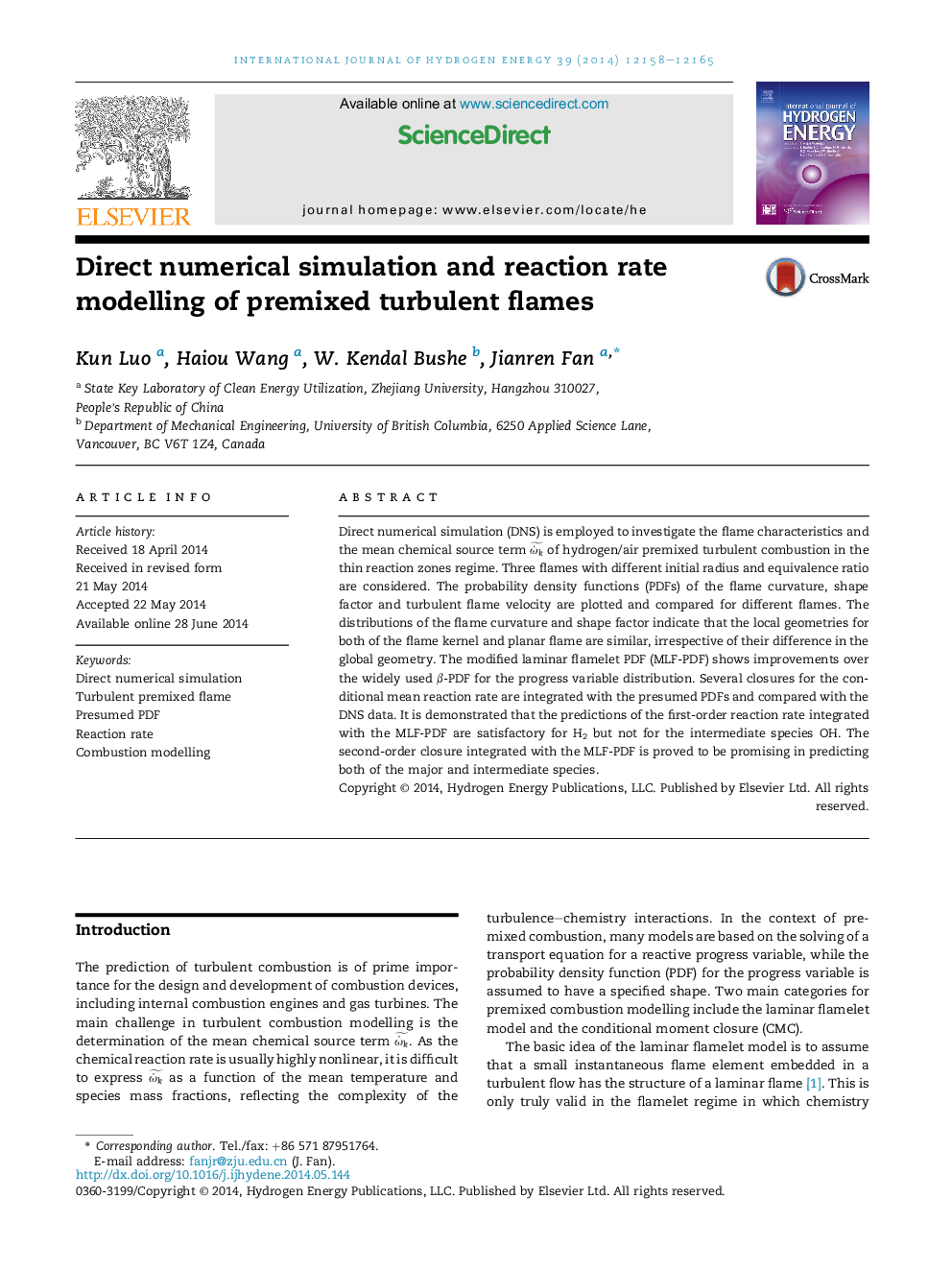| Article ID | Journal | Published Year | Pages | File Type |
|---|---|---|---|---|
| 1273014 | International Journal of Hydrogen Energy | 2014 | 8 Pages |
•DNS is employed to investigate the mean chemical source term.•The local geometries for both of the flame kernel and planar flame are similar.•Several closures for the conditional mean reaction rate are integrated.•The second-order closure integrated with the MLF-PDF is proved to be promising.
Direct numerical simulation (DNS) is employed to investigate the flame characteristics and the mean chemical source term ω˙k˜ of hydrogen/air premixed turbulent combustion in the thin reaction zones regime. Three flames with different initial radius and equivalence ratio are considered. The probability density functions (PDFs) of the flame curvature, shape factor and turbulent flame velocity are plotted and compared for different flames. The distributions of the flame curvature and shape factor indicate that the local geometries for both of the flame kernel and planar flame are similar, irrespective of their difference in the global geometry. The modified laminar flamelet PDF (MLF-PDF) shows improvements over the widely used β-PDF for the progress variable distribution. Several closures for the conditional mean reaction rate are integrated with the presumed PDFs and compared with the DNS data. It is demonstrated that the predictions of the first-order reaction rate integrated with the MLF-PDF are satisfactory for H2 but not for the intermediate species OH. The second-order closure integrated with the MLF-PDF is proved to be promising in predicting both of the major and intermediate species.
